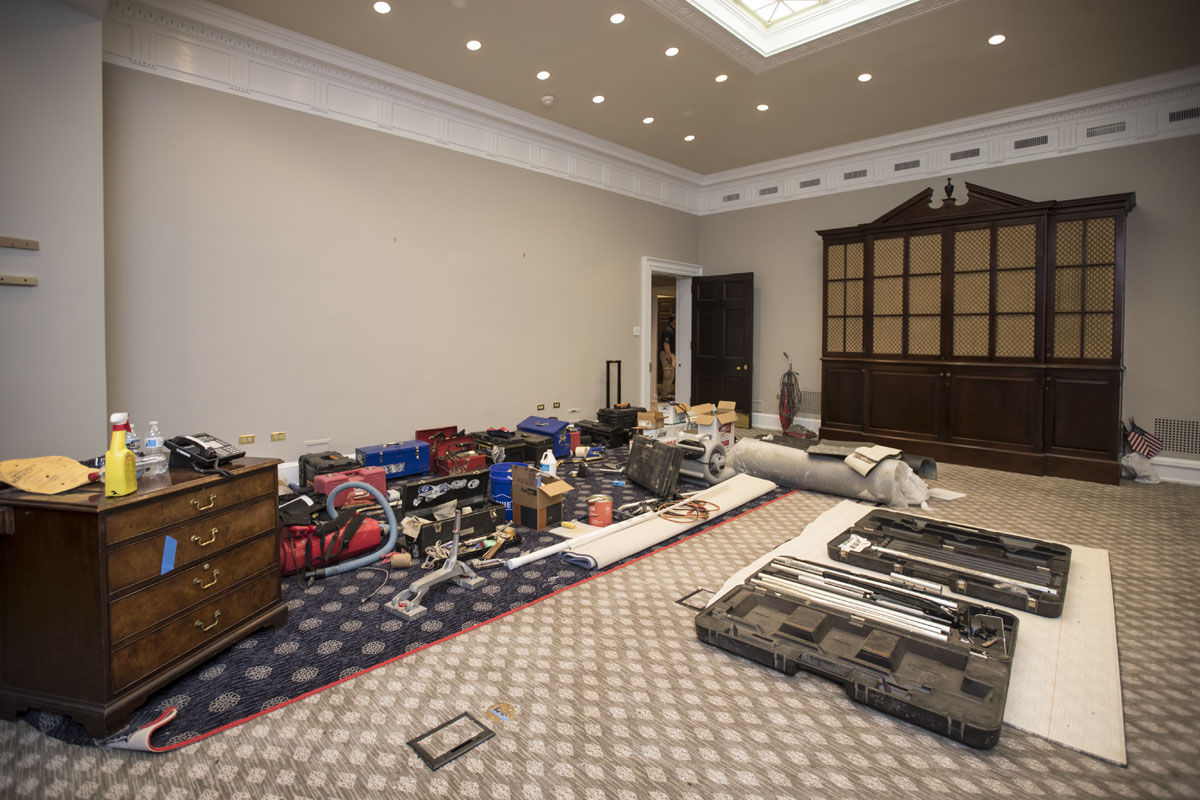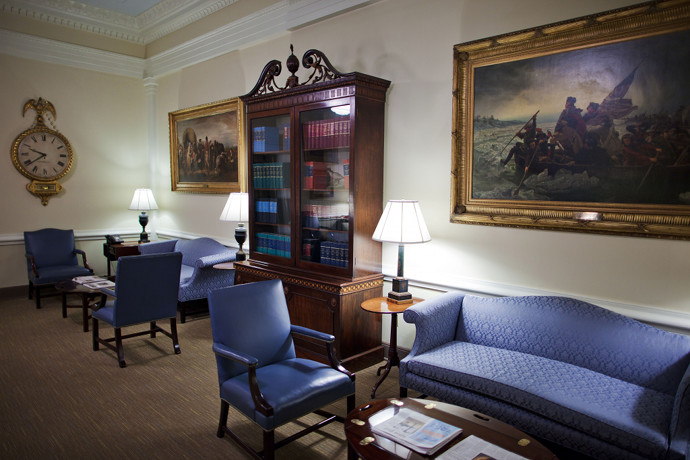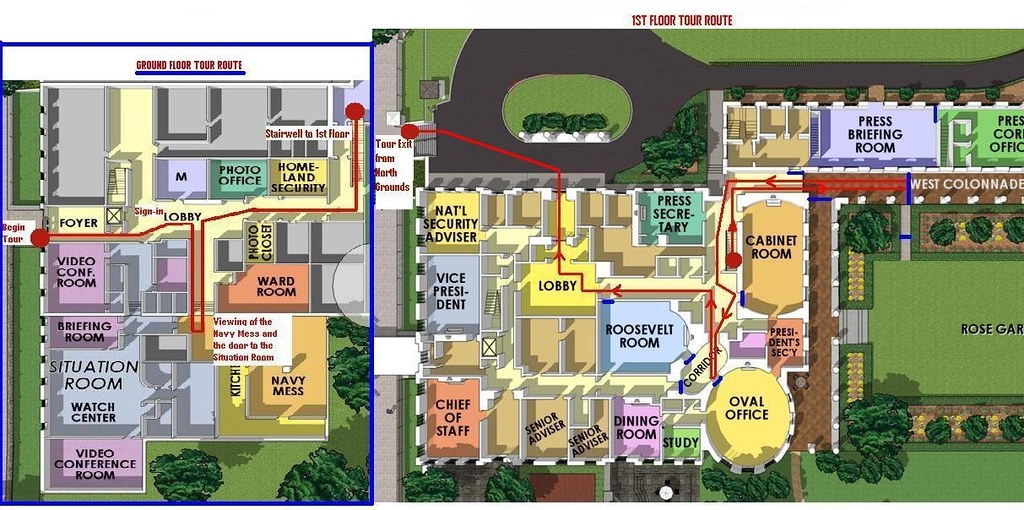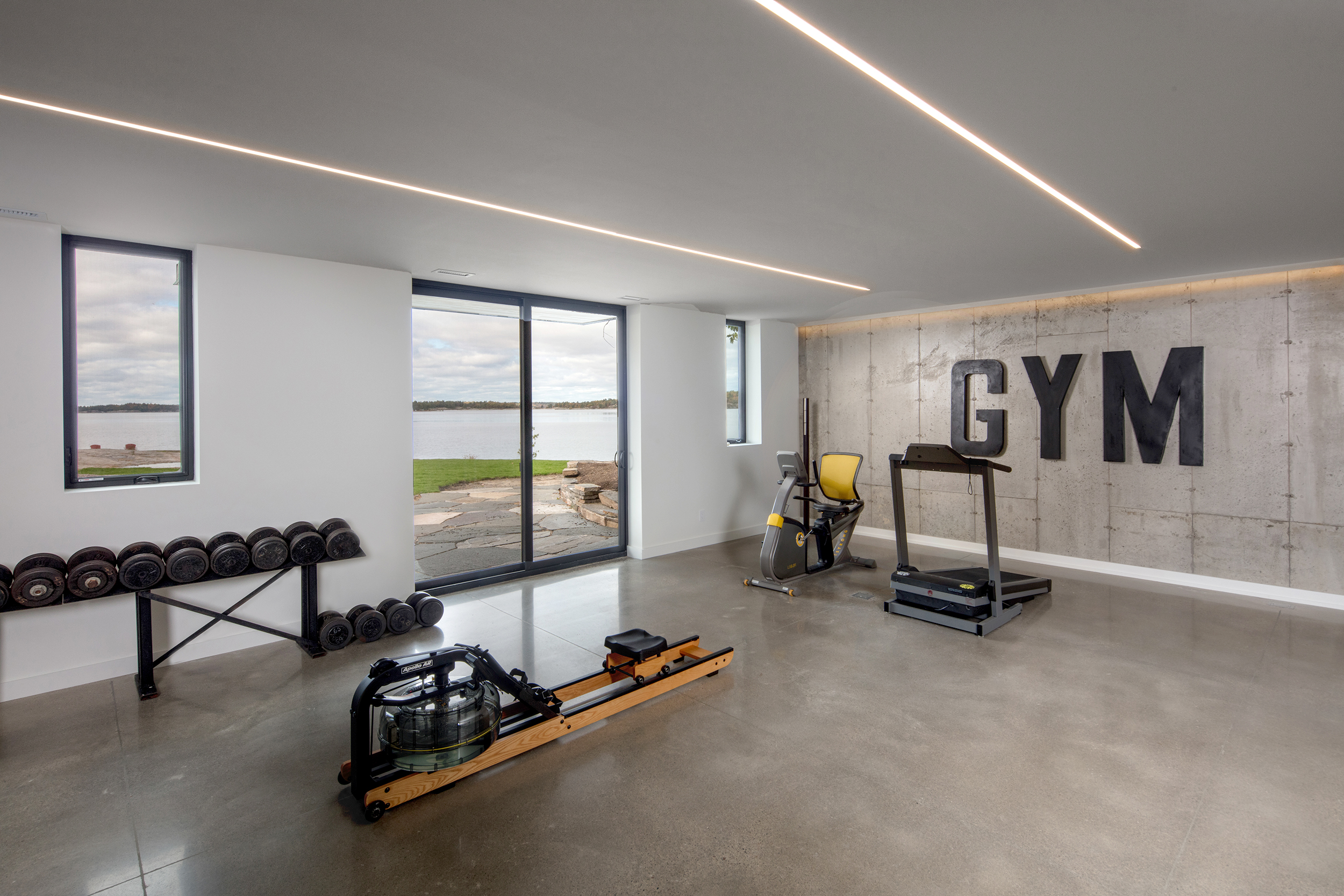Table Of Content

Roosevelt's successor, President William Howard Taft, relocated the president's office in 1909 and changed its shape to oval. By establishing the Oval Office in the center of the West Wing, the president was able to work more closely with his staff. As a result 20th Century presidents became more involved in the operations of government. President Roosevelt held his first cabinet meeting in the Cabinet Room of the West Wing on November 6, 1902.
Taft Oval Office: 1909–1933
Walter’s 1853 plan shows the 1809 extension as two rooms, the western one being the carriage horse stable and not the servant’s room or the “hen house,” as intended on the original Jefferson plan. Latrobe’s initial task at the White House was to replace a leaking roof of slate embedded in mortar and gutters that were letting buckets of water into the house, threatening to destroy the few newly installed architectural finishes. Jefferson also called upon Latrobe to fix the two new water closets on the Second Floor that were fed from rain-collecting cisterns in the attic. Jefferson redesigned the grand, but unbuilt, west stair- case that Latrobe would construct off-axis in order to open the vista and public access to the terrace promenade once there was a wing built to support it. A similar glass door was retrofitted in the similar eastern Serliana or venetian window for east wing terrace access. This letter informs us of a number of important issues respecting the immediate and continuing construction of the wings.

James Hoban: Architect of the White House

The Walter plan thus serves as one verifiable measure in addition to other evidence when determining the original room usage and size for the east and west wings. On a cold March 11, 1809, Thomas Jefferson paid the ferryman $1 to take him and his carriage across the Potomac River at Georgetown and headed south toward retirement. What he left behind at the President’s House were unfulfilled dreams of remodeling the still-unfinished mansion and completing its partly built domestic service wings, which were entirely his idea. It is ironic, in retrospect, that these wings, with their zigzag roofs and flat terrace platforms, would become his physical heritage there, because they have been mostly forgotten. Since the 1940s Jefferson has stood in oversize bronze in the Jefferson Memorial, gazing north toward the White House.
Delve into the history of the White House and the president who built the West Wing.
When the EEOB was finished in 1888, it was the largest office building in Washington, with nearly 2 miles of black and white tiled corridors. Almost all of the interior detail is of cast iron or plaster; the use of wood was minimized to ensure fire safety. Eight monumental curving staircases of granite with over 4,000 individually cast bronze balusters are capped by four skylight domes and two stained glass rotundas. At the White House the iron was needed for a hasty retrofit to replace the leaking slate roof and gutters of Hoban’s roof. On the west the subterranean ice house became re-enclosed in brick as part of the west wing in 1805. It constitutes the “room” and contained the wine cellar space referred to in the report to Congress as “cellar for liquors.”25 The proposed Walter plan substantiates the ice house use and location in 1853, since its survival was structurally assured and its function easily reactivated after the fire.
Cocaine found in White House discovered in West Wing visitors lobby - USA TODAY
Cocaine found in White House discovered in West Wing visitors lobby.
Posted: Wed, 05 Jul 2023 07:00:00 GMT [source]
Also known as the “45 second commute,” the West Colonnade was built for Thomas Jefferson to run alongside service spaces underneath the West Terrace, such as the ice house and storage rooms for coal and wood. The open columned walkway is now used by the President and his staff to travel between the West Wing and the Executive Residence. As part of a third major renovation in 1934, a second floor was added to the West Wing to create additional office space as presidential staffs had gotten larger. Until 1902 the first family quarters shared the Second Floor with the president's offices while the Third Floor was simply an attic. James Madison Randolph, grandson of Thomas Jefferson and the first presidential grandchild, as well as Esther Cleveland, Grover Cleveland's daughter and the first presidential child, were both born on this floor in the White House. The upstairs family quarters also witnessed the sorrow of Willie Lincoln's death and the long confinement of the mortally wounded President James Garfield.
The East and West Wings of the White House
A new east wing was constructed in 1942, its cloakroom transformed into a movie theater. Many of our most celebrated national figures have participated in historical events that have taken place within the EEOB’s granite walls. Theodore and Franklin D. Roosevelt, William Howard Taft, Dwight D. Eisenhower, Lyndon B. Johnson, Gerald Ford, and George H. W. Bush all had offices in this building before becoming President. It has housed 16 Secretaries of the Navy, 21 Secretaries of War, and 24 Secretaries of State. Winston Churchill once walked its corridors and Japanese emissaries met here with Secretary of State Cordell Hull after the bombing of Pearl Harbor.
A room without a view - POLITICO - POLITICO
A room without a view - POLITICO.
Posted: Thu, 25 Jan 2024 08:00:00 GMT [source]
The new office space gave the president and his staff much-needed room to work and serve the American people. TheWest Wing houses the President's Oval Office, the offices of his executivestaff, the Cabinet Room, the Roosevelt Room, and the James S. Brady PressBriefing Room. Before 1869, the West Sitting Hall was little more than a staircase landing lit by an elegant half moon window, or a lunette (which has its twin in the East Sitting Room). The presidents and first ladies would descend to the Cross Hall below on state occasions. President Ulysses Grant had the grand stair remodeled, allowing sitting space by the window.
While it offers a distant comparative view in time, we know that President James Madison was determined to rebuild the house and wings as they were before the fire, a symbolic gesture that also implied the already iconic nature of the house. Hoban left a pretty good description of the extent of the main house’s standing walls but not of the wings. The wing’s masonry walls, partially in-ground, might have withstood substantial destruction just like those of the basement.
The sheet metal used in the White House roof gutters probably lasted until the British torched the place in 1814, but another typical type of failure before that pre- vented President James Madison from strolling or sitting on the deck as Jefferson had. Latrobe wrote Madison in 1812 that the “platforms covering the gutters were rot- ten and must be replaced.”47 This message must have chagrined Madison, who had adopted one of Jefferson’s zigzag roof systems to create decks over the 1809 wings at his Montpelier. Whether they were replaced at the White House, or not, is hardly relevant because they would be burned in two years. Whether Hoban constructed the roof structure with Jefferson’s joist system or simply constructed a low pitch rafter roof is unknown. Jefferson’s third space, the necessary or privy, Seale indicates was for servants on this side whereas the east privy would be reserved for the family and guests.27 At 10 feet wide it might have been divided into two stalls but, one or two, was probably still “unisex,” as per the custom. Latrobe’s reference to cellars for “coal or dung,” mentioned in relationship to rooms 10 feet wide, seems to confirm a combined cellar space for the coal cellar and privy waste removal.
On the right, the south wall, can be seen the first lunette window bay adjacent to the ice house, with a later doorway below it. To the right of that bay is the “ghost” of a missing wall that separated the ice house from room two. The second bay shows the sill of a doorway accessing the wood room that was later filled with brick. The evidence would seem to confirm the Walter plan’s depiction showing a window in bay two. A surviving drawing helps establish the size of the initial west wing (illustration 9). If it is related to working out the dimensions of Latrobe’s design of a pilaster and pier, it would date to 1807 or 1808.
One here in the West Wing, and another — officially called the Vice President's Ceremonial Office — is about 150 feet to the west in the Eisenhower Executive Office Building. The first Oval Office was built in 1909 for President William Taft, and became the official work place for the president. The Oval Office was later rebuilt to its current location at the southeast corner of the West Wing during Franklin Roosevelt’s presidency, in part to accommodate easier access for his use of a wheelchair. The unique shape of the office was designed to echo the oval shape of the Blue Room in the White House’s main residence. The press secretary and other communications personnel offices are located near the northeast corner of the West Wing, in close proximity to the James S. Brady Press Briefing Room.

No comments:
Post a Comment